
In the world of cryptocurrencies, the mechanisms controlling supply and demand play a crucial role in shaping a token’s value. One such mechanism gaining attention is how Pump.fun handles token launches and liquidity pools, which indirectly affects the circulating supply of SOL.
Recently, Pump.fun co-founder shared on X that their token graduation mechanism, combined with liquidity pool burning, is effectively reducing the circulating supply of SOL.
In this article, we’ll break down how this mechanism works and examine its deflationary impact on SOL.
What Does "Burning" Mean Here?
-
Liquidity Pool Burning: When a token graduates from Pump.fun, its initial liquidity on Raydium is "burned." This means the liquidity provider (LP) tokens are sent to an inaccessible address, permanently locking liquidity in the trading pool.
-
SOL’s Role: A "minimum price" is set for the token, locking a specific amount of SOL in the pool. This SOL is essential for trading but cannot be withdrawn, effectively removing it from Solana’s active supply.
- Inactive Pool: Many liquidity pools lose activity over time and become inactive. While some SOL is still in these pools, it can't be withdrawn, effectively taking it out of SOL's active supply.
The Key Numbers
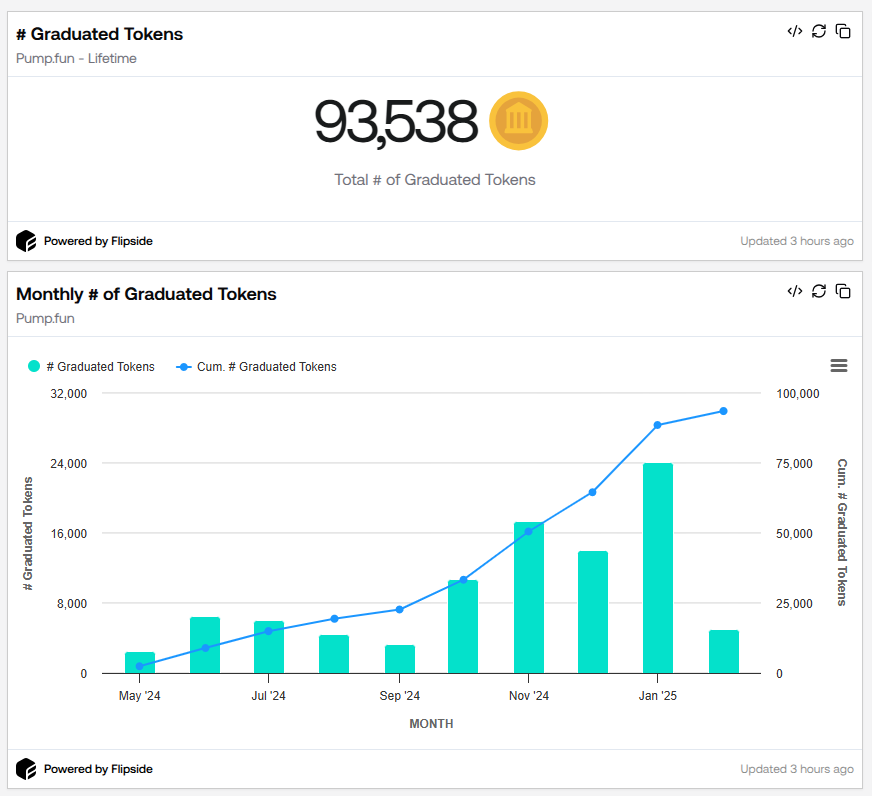
Based on Flipside data, over 93,500 tokens have graduated from Pump.fun, and successfully transferred their liquidity to Raydium. Last month set a new record, with more than 24,000 tokens completing the process—the highest number to date.
While Pump.fun has launched far more tokens overall, only those that reach a 79 SOL market cap through the bonding curve mechanism qualify for graduation. Once a token graduates, $17,000 worth of liquidity is added to a Raydium pool and then burned.
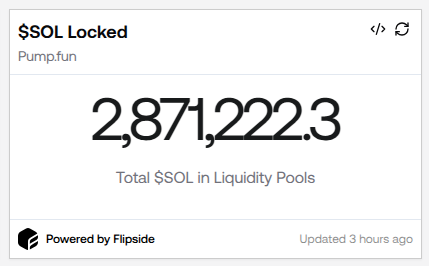
Currently, over 2.87 million SOL are locked in these liquidity pools. This mechanism helps protect against "rug pulls," ensuring that liquidity isn't suddenly withdrawn, leaving traders with unsellable tokens.
SOL Distribution in Liquidity Pools
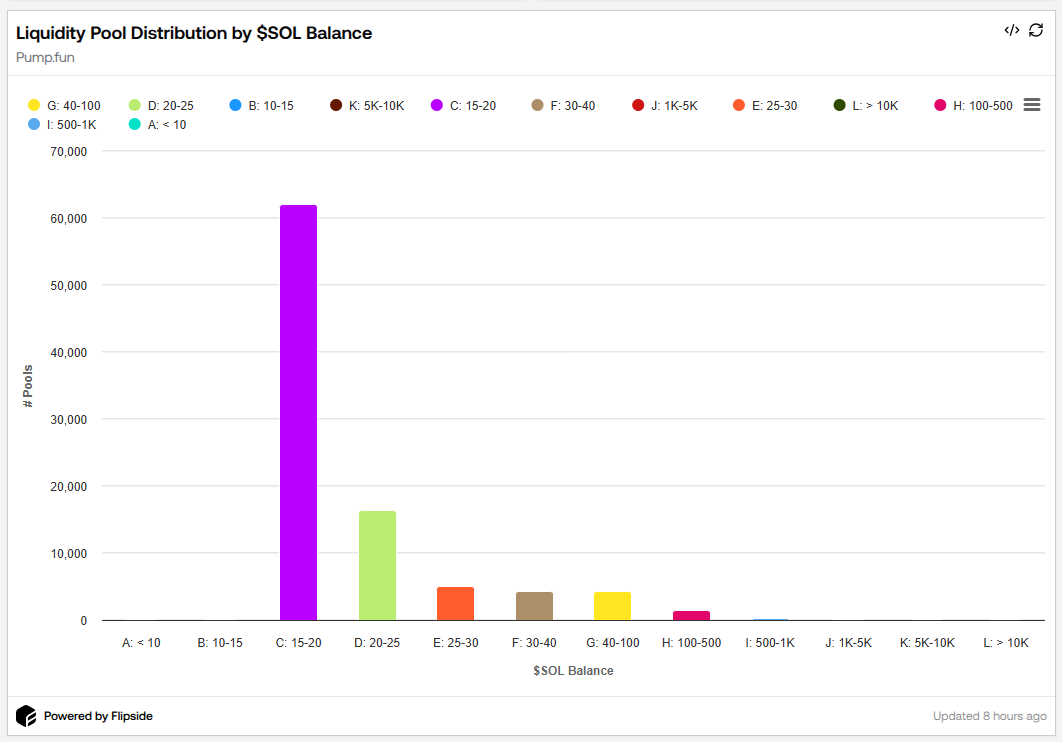
Breaking down the SOL distribution across these pools:
-
62,000 pools hold between 15 and 20 SOL each.
-
16,298 pools hold between 20 and 25 SOL, making it the second-largest category.
-
Overall, 84% of pools contain less than 25 SOL.
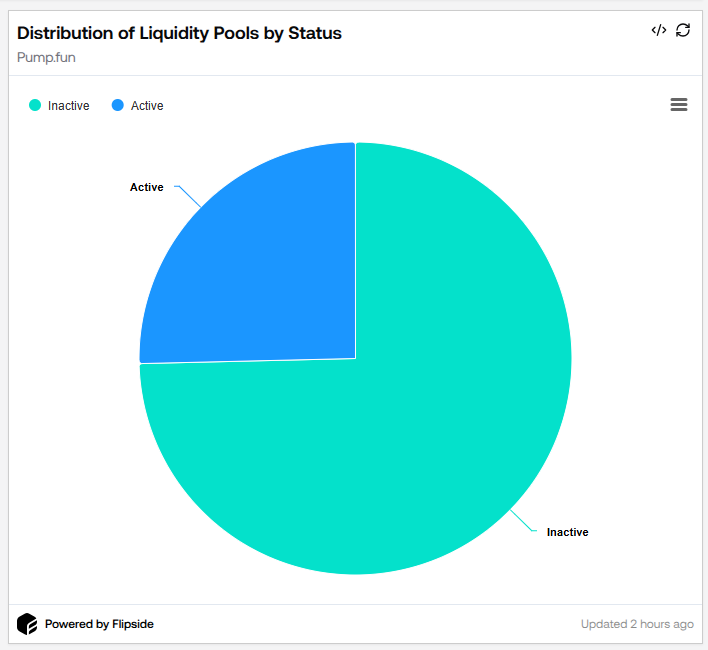
However, many of these pools are now inactive, meaning users are no longer trading the tokens. Based on recent transaction data, 74.6% of these pools are inactive, effectively removing the locked SOL from circulation.
The Final Impact
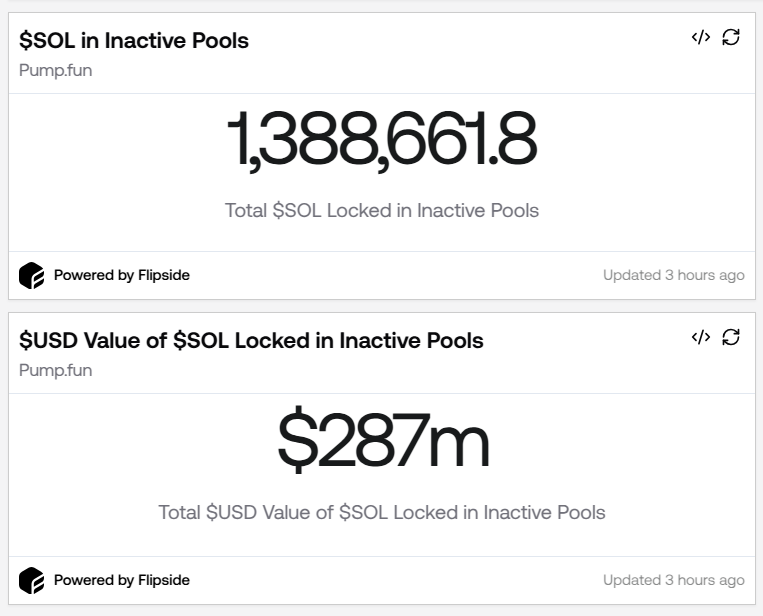
As a result, over 1.38 million SOL—worth more than $287 million—is now locked in inactive pools. Since this SOL is no longer accessible, it has been effectively removed from the active supply, contributing to a deflationary effect on the SOL.
Read More on SolanaFloor
Sol Strategies Accelerates Aggressive SOL Buying, Adds 24,374 SOL in Latest Acquisition



